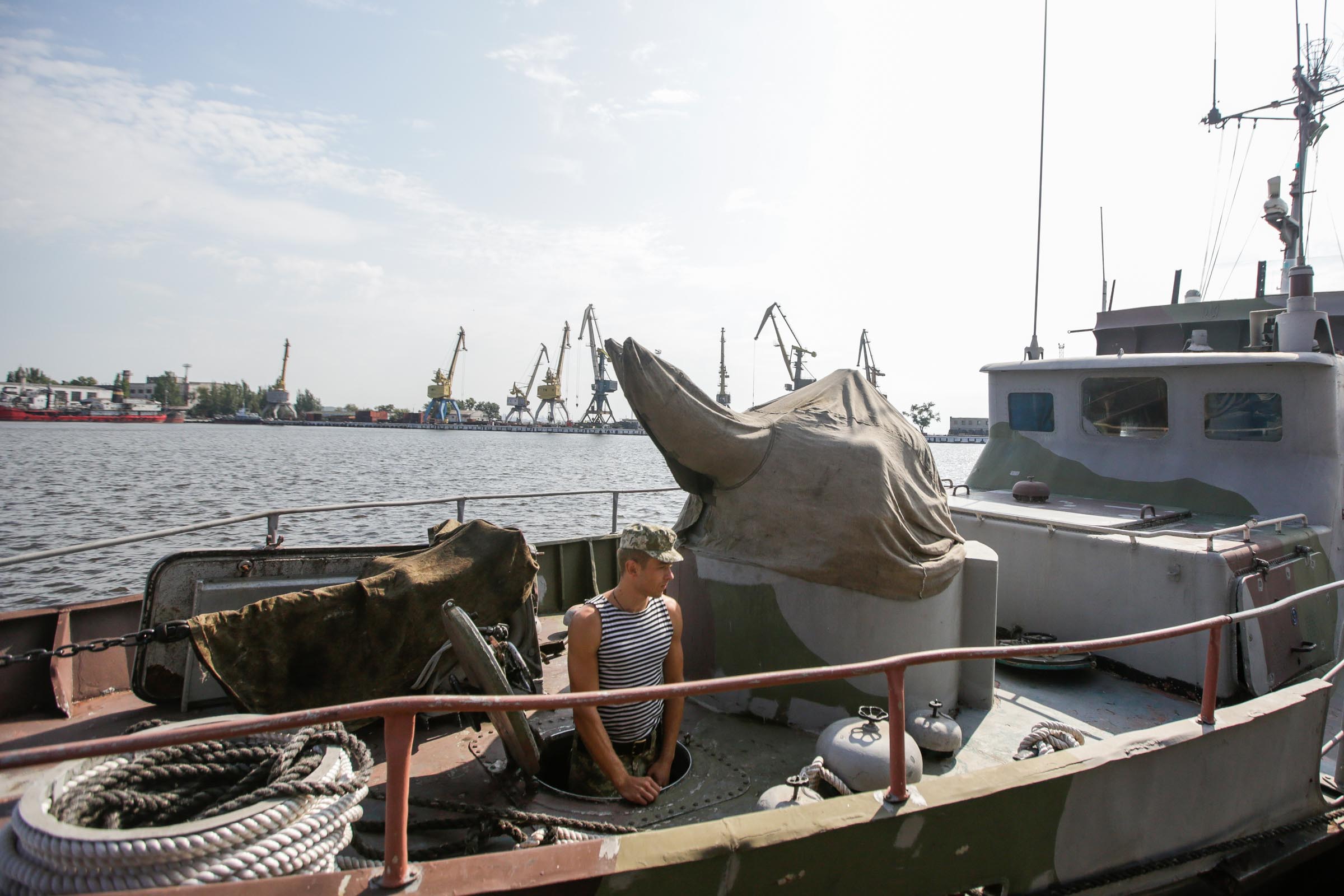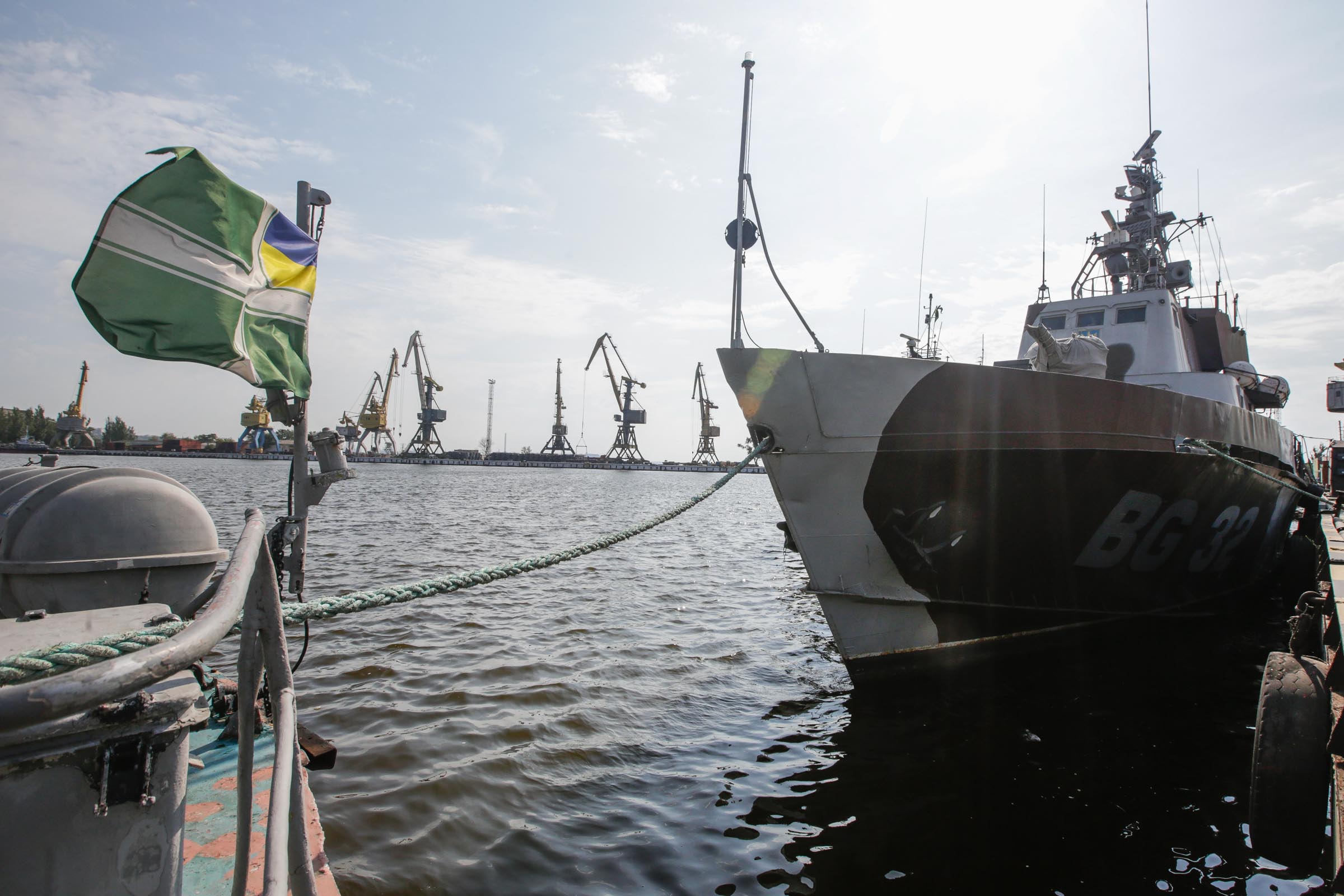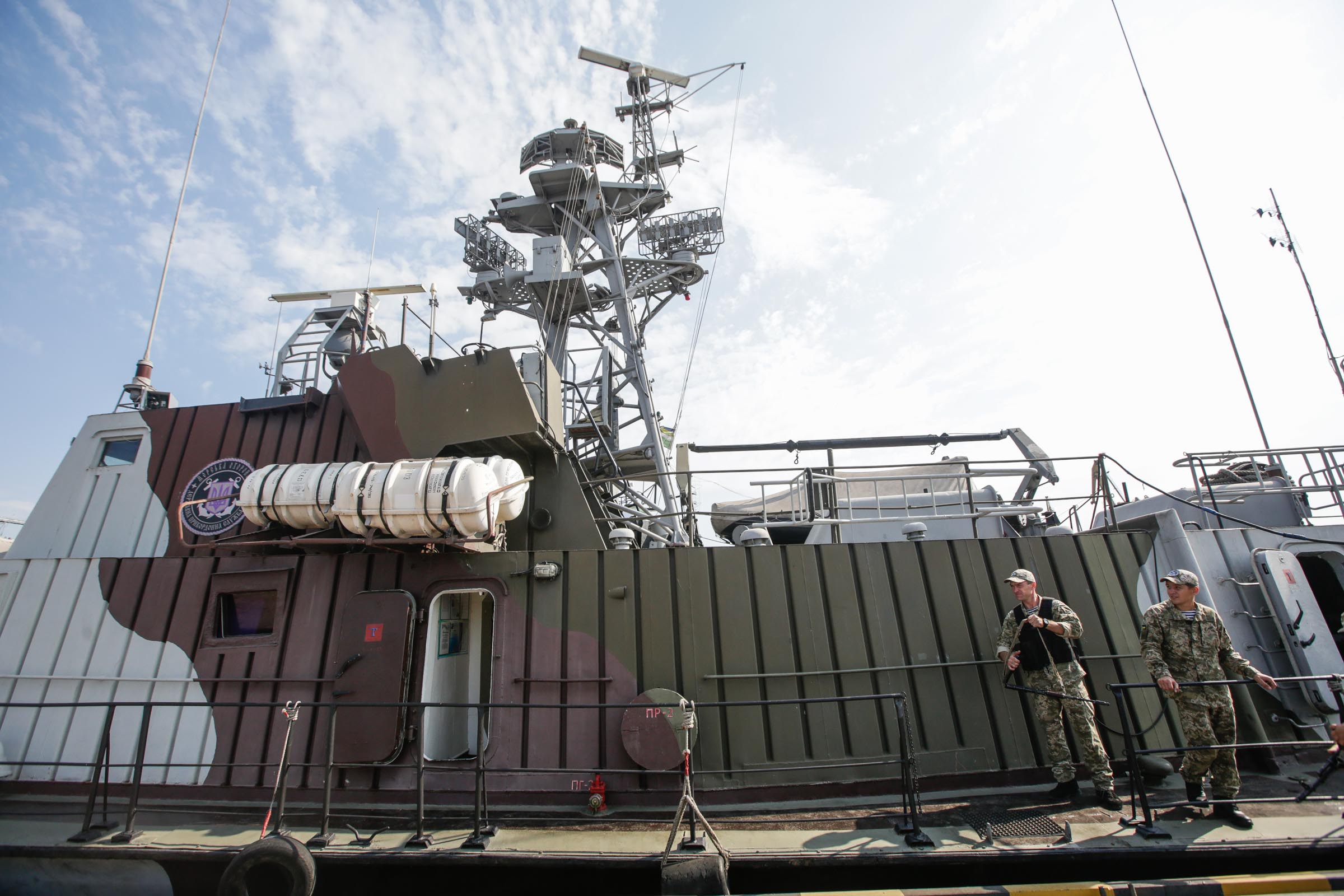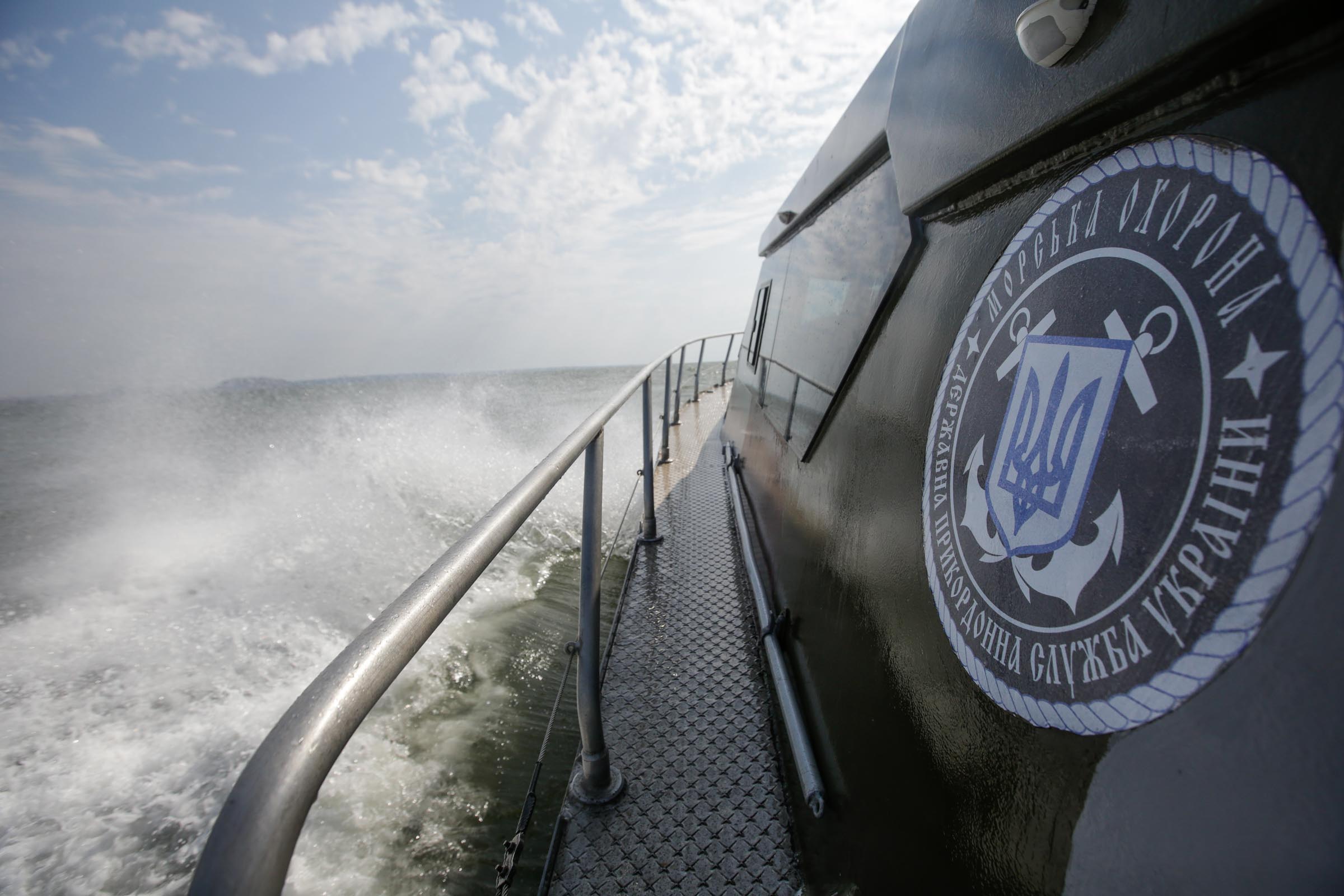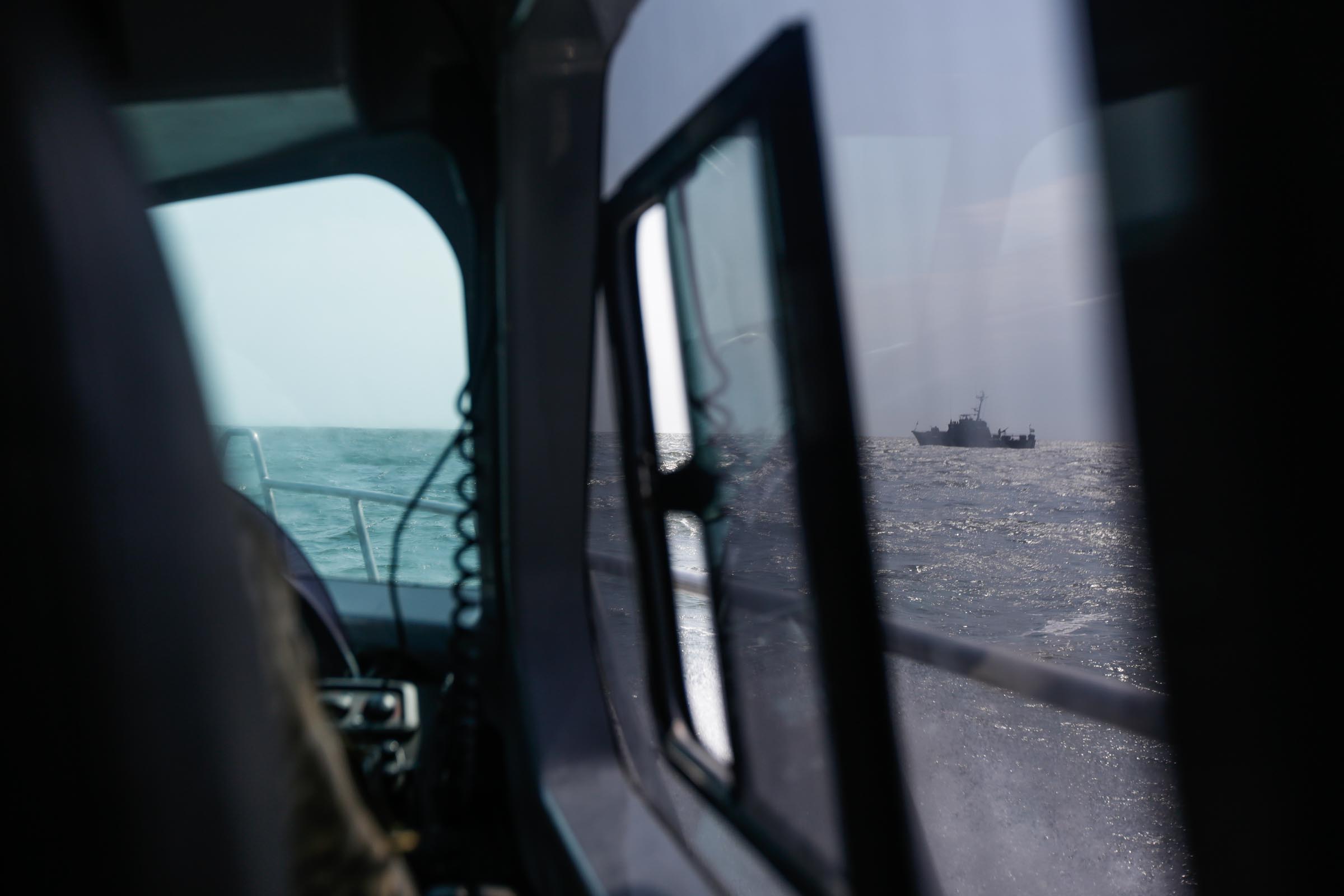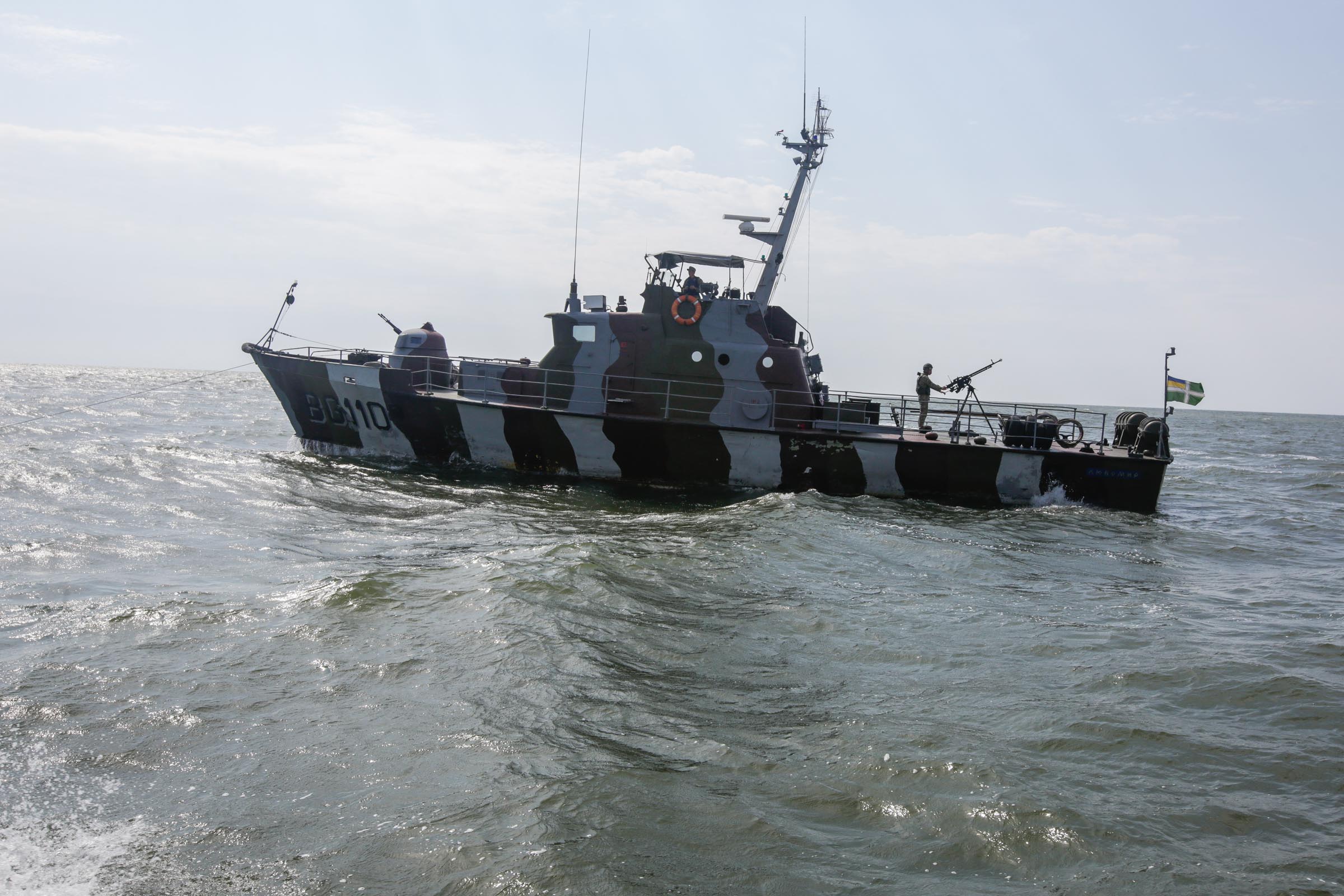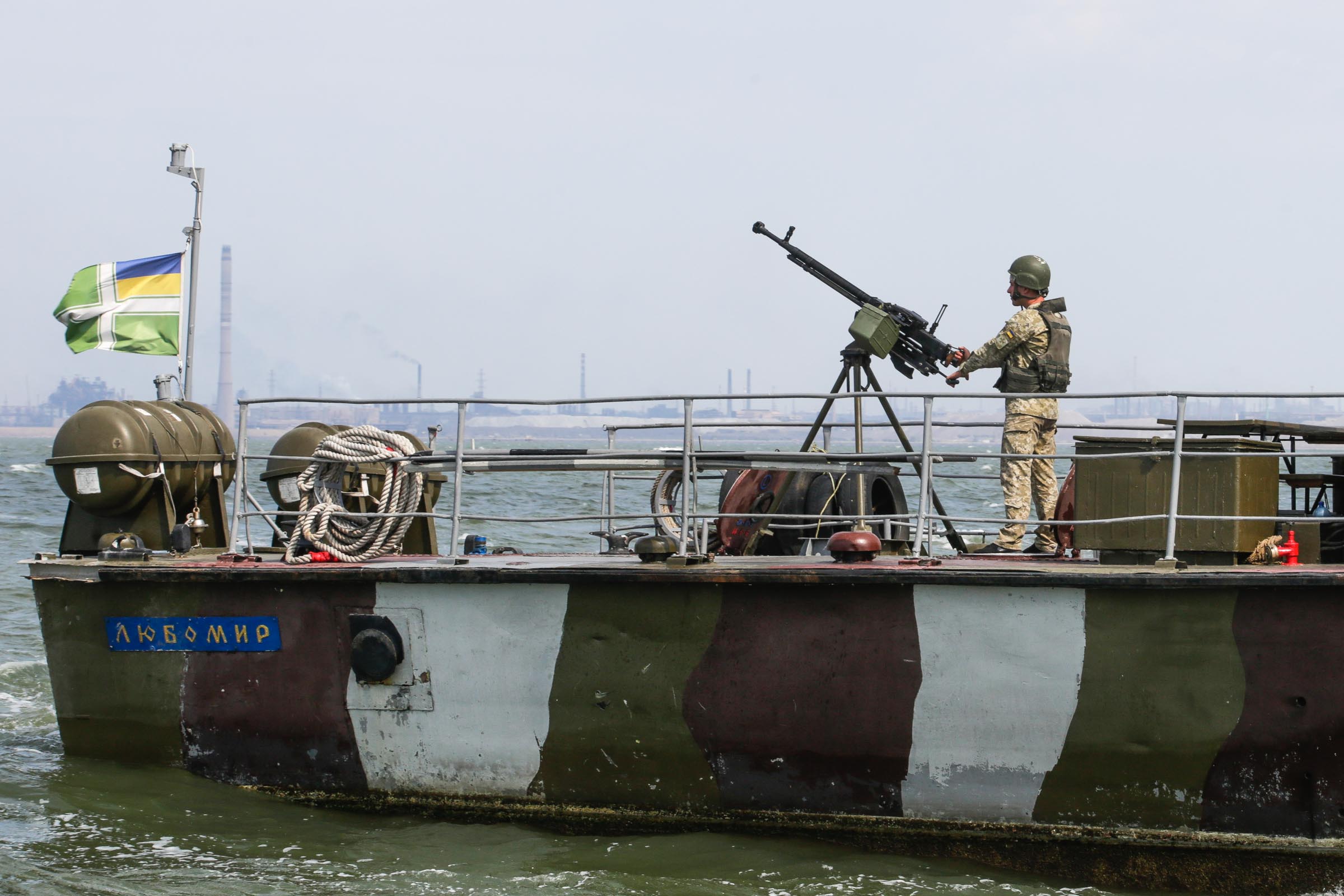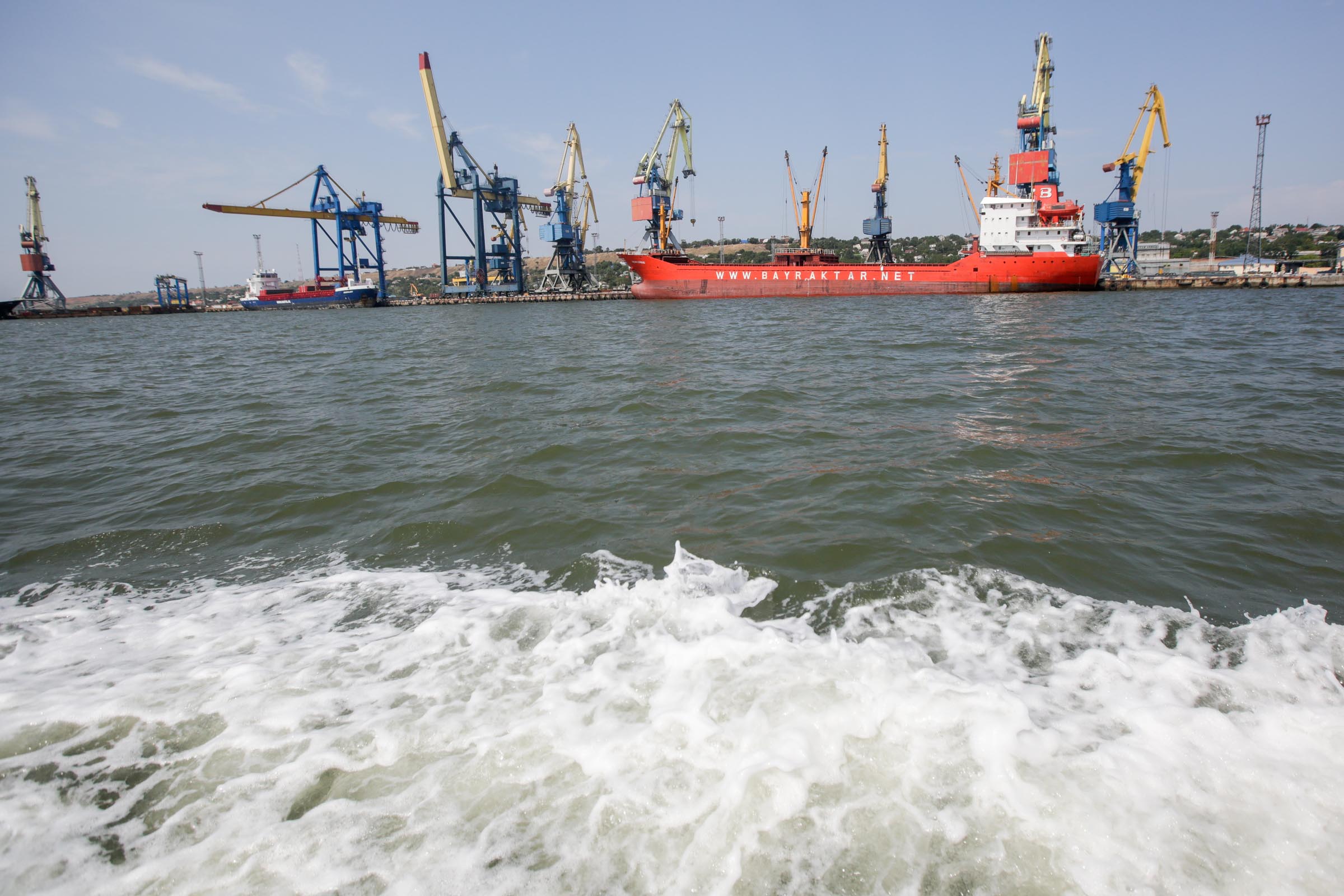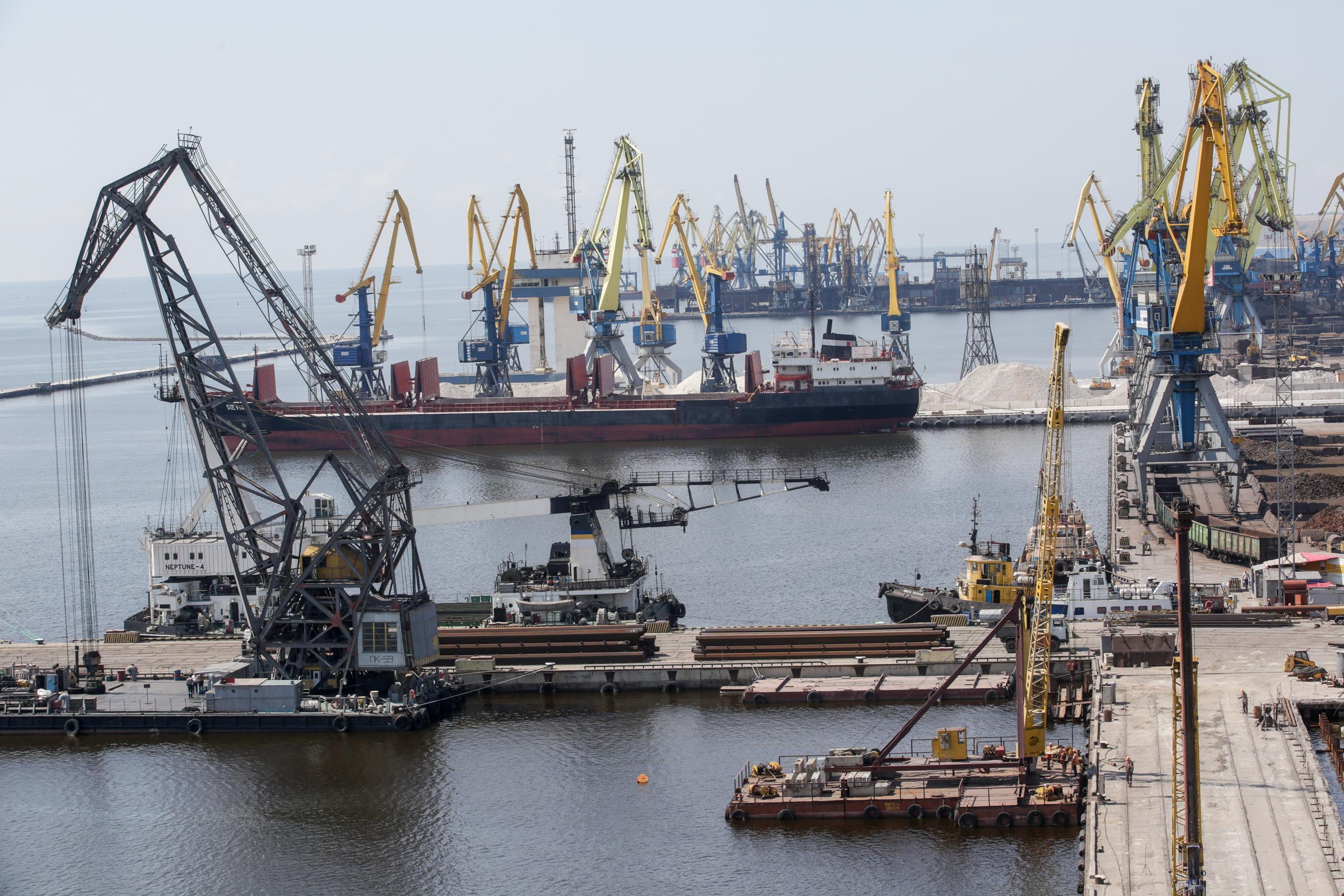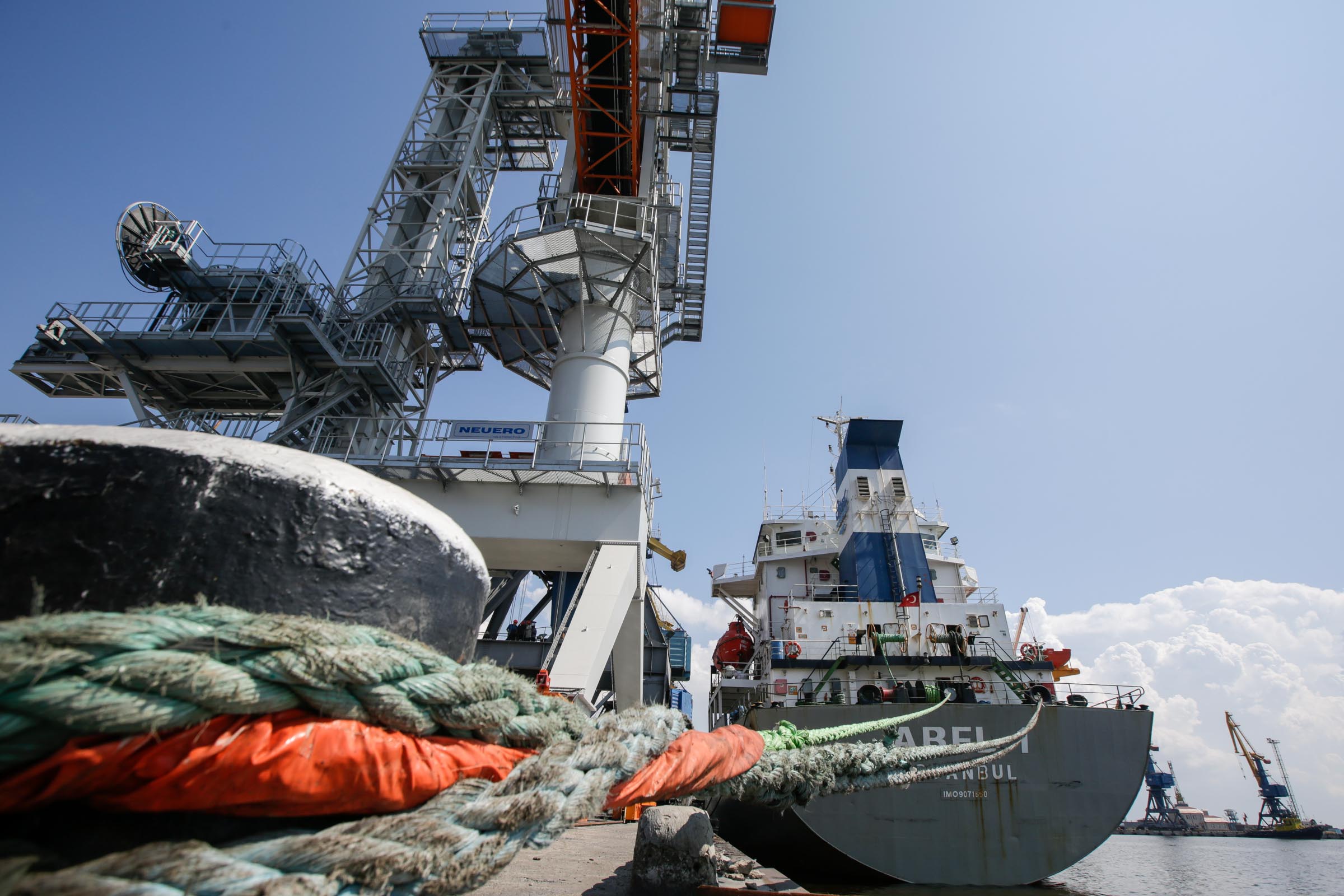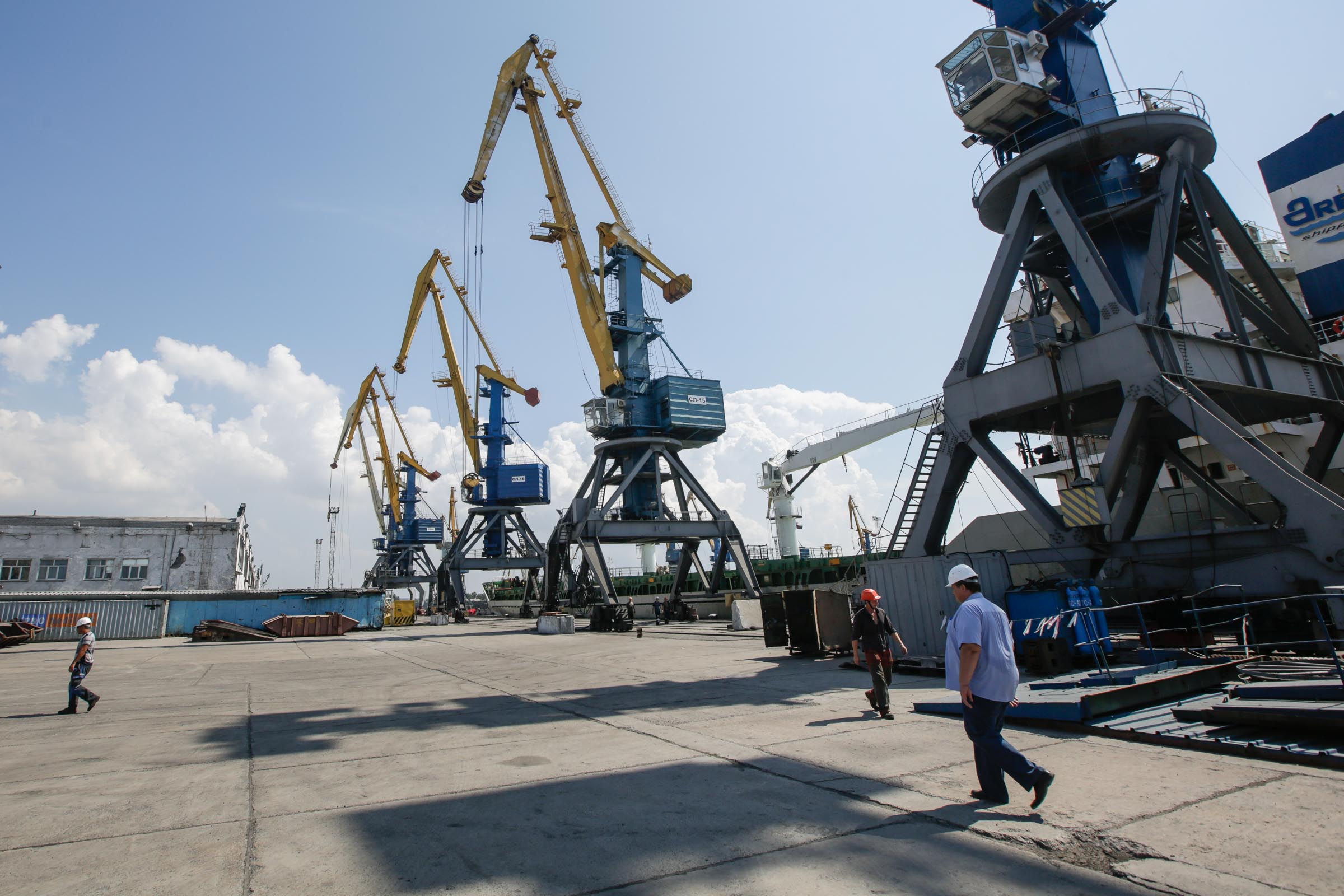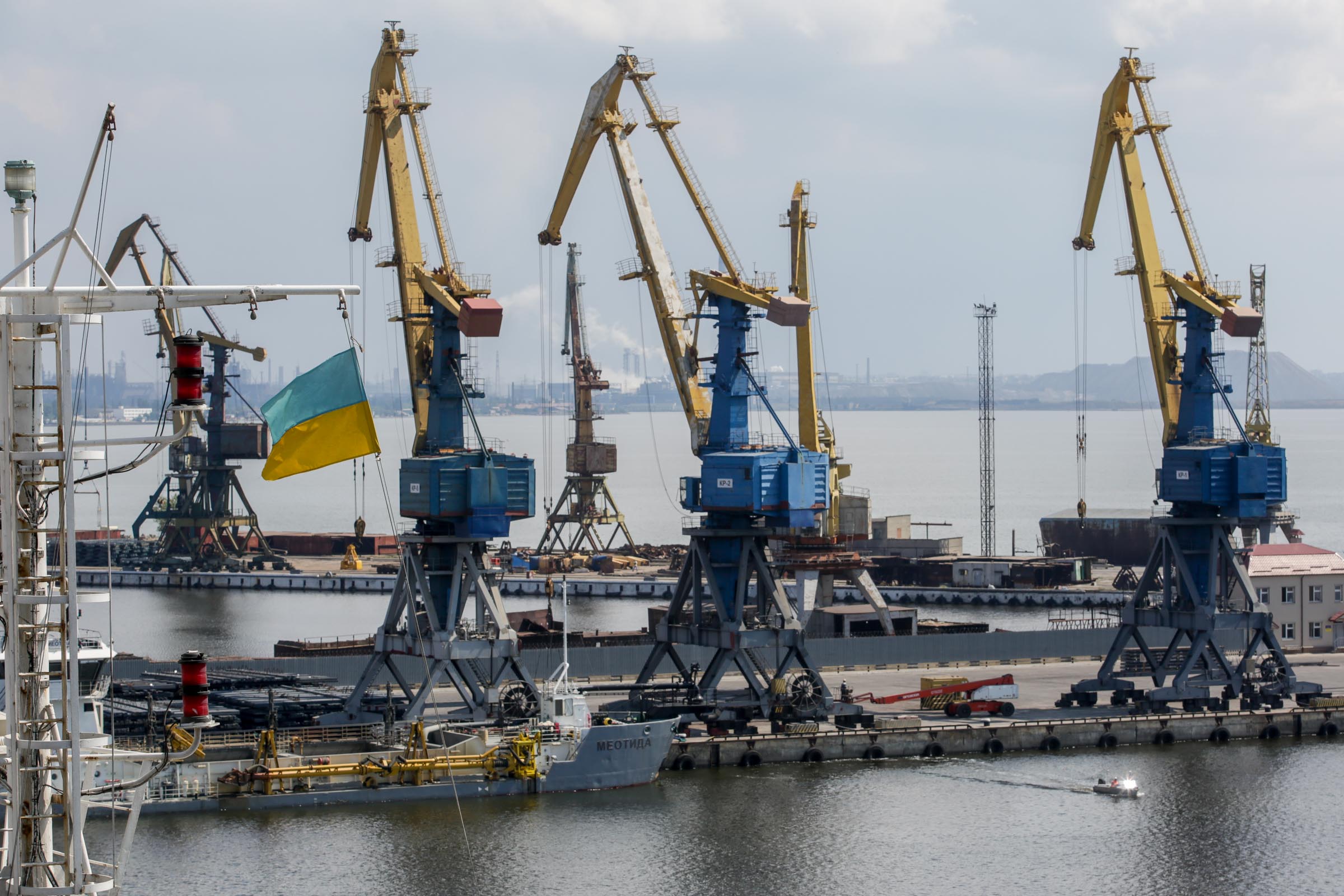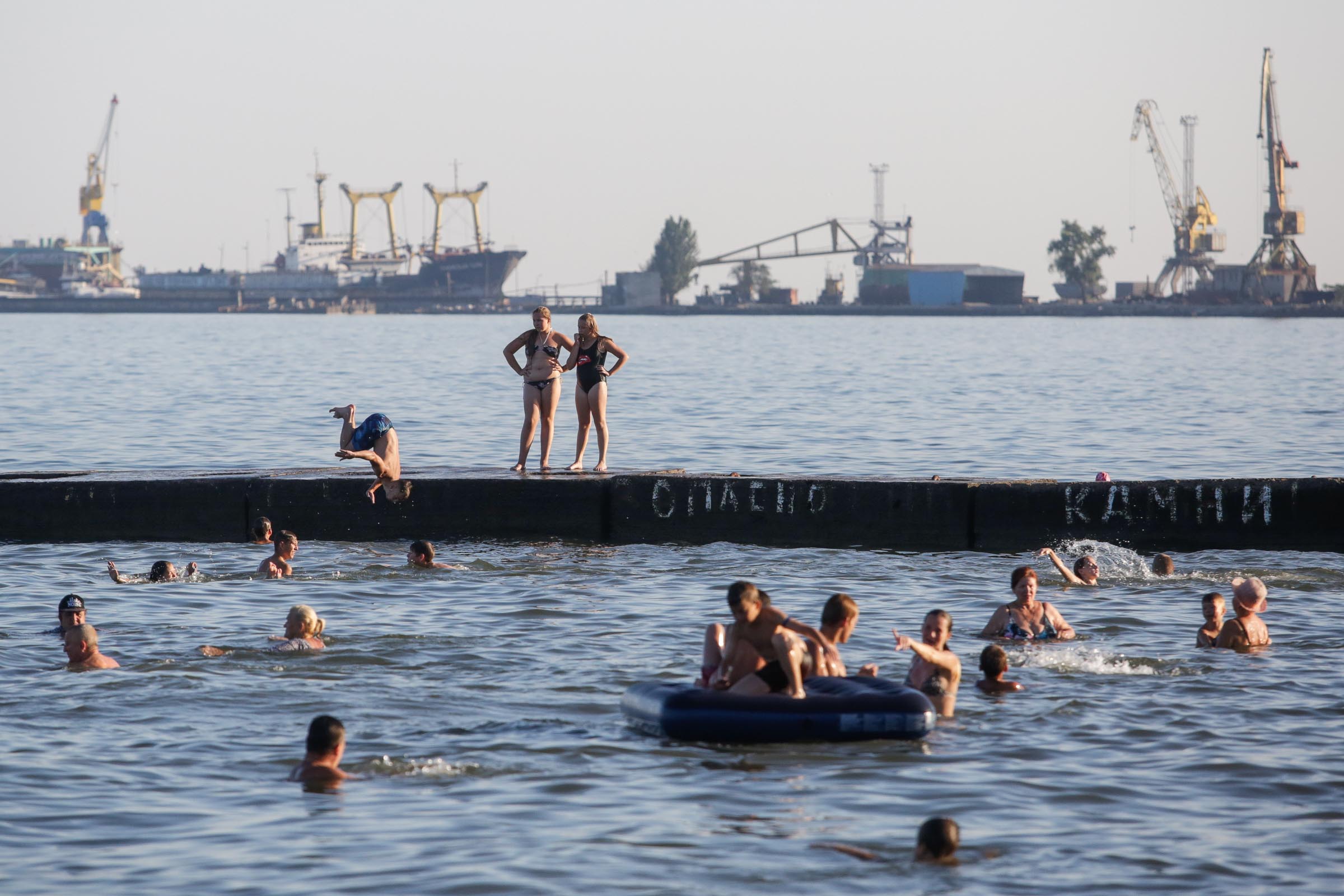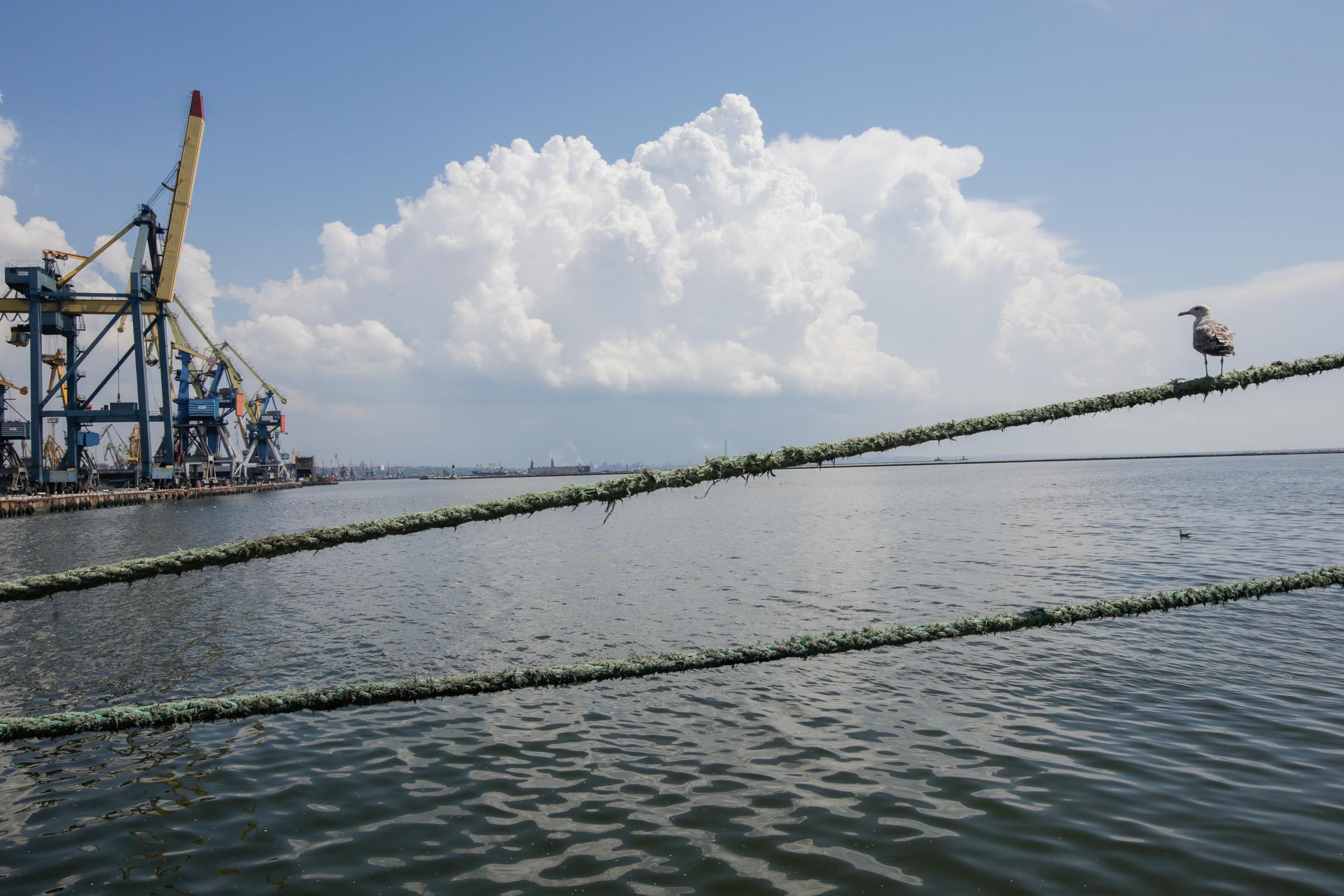MARIUPOL, Ukraine — In August 2014, Ukrainian activists in Mariupol were digging trenches and weaving camouflage nets. They were working frantically to help the Ukrainian army stop the advance of Russian-led forces, which had come to within 20 kilometers of the city.
Four years later, the threat has moved from land to sea.
Activists anxiously monitor the movements of Russian warships off the Ukrainian coast, fearing an amphibious assault on Mariupol, an industrial seaport city of nearly 500,000 people on the coast of the Azov Sea, 800 kilometers southeast of Kyiv.
Despite Mariupol being the scene of fighting and rocket attacks during the early phase of Russia’s ongoing war in eastern Ukraine, life has generally been peaceful since 2015.
But since May, when Russia opened the Kerch Bridge connecting Russia to the Kremlin-occupied Ukrainian Crimean peninsula, Russian coast guard members subordinate to the Kremlin’s FSB security service — the successor to the Soviet-era KGB — have started stopping trade ships in the Azov Sea. The pretext is to keep the bridge and Russian coast secure.
The Russians are within their rights to do this under an agreement the Kremlin signed with Ukraine in 2003, during the rule of President Leonid Kuchma. It allowed Ukraine and Russia to patrol all of the Azov Sea and to sail to within 22 kilometers of each other’s coastlines.
But Russian military power boats sometimes come within six kilometers to Ukraine’s coast, activists say, and there’s nothing Ukraine can do about it.
Ukraine’s poorly equipped coast guards can only watch. And while Kyiv has announced it will hold several military exercises this summer in the Azov Sea, this is more to boost local morale than scare off the Russians, experts say.
The Russians “can do whatever they want. Our border, in fact, is at the edge of the sea,” said Mariya Podybailo, a Mariupol volunteer who is helping Ukrainian army.
Colleague Galyna Odnorog added: “Anything could ignite the current situation and take it from peace to war. We’re in a tinderbox here.”
Patrols at sea
Despite a threatening storm, a small UMS‑1000 powerboat, nicknamed “Little Boy” by coast guards, leaves Mariupol port in late July to patrol.
Although Ukrainian coast guards usually venture no more than 24 kilometers from the shore, they see their Russian counterparts almost every day and talk to them by radio.
“We usually tell them not to come close to our coast, and they respond that they won’t,” said Oleg Vorontsov, a radio operator.
Vorontsov added that he also hears by radio how the Russians talk to merchant vessels — conversations that often end up with the ships being stopped and boarded for checks that can take from several hours to several days.
The Russians don’t usually give any reasons for making the check, and don’t leave any written reports with ship captains, as such papers could be used in court cases.
There’s nothing the Ukrainian coast guards can do to stop the Russians.
The Mariupol coast guards, who patrol more than 300 kilometers of Azov Sea coastline, have up to 20 small vessels, and just two coastal patrol ships that escaped from Kerch to Mariupol in March 2014 during the Russian invasion of Crimea.
One of those warships, BG‑32 Donbas, was constructed 32 years ago, another one, BG‑59 Onyx, is a former Turkish fishing vessel confiscated from poachers a decade ago. The coast guards say Onyx is the best vessel they have.
Another trophy the coast guards have is a boat confiscated in 2015 from fishermen who showed IDs issued by authorities in the Russian-occupied part of Donetsk Oblast. But apart from that case, the coast guards have never come across any boats from the parts of the Donbas under Russian occupation.
But the boats from Russia are a constant irritation for them.
“There should a precise boundary (between Russia and Ukraine) in Azov Sea. There should be one owner, not two (in each part of the sea),” said Artem Poliakov, the press officer of the Mariupol Detachment of Maritime Security, part of Ukraine’s Joint Forces Operation, which now conducts the military operation to protect Ukrainian territory in the east.
Weak point
In this region, Ukraine also upholds one more coastal guard detachment in the city of Berdyansk, some 60 kilometers southwest of Mariupol. However, this unit engages obsolete small patrol boats and also falls short of very basic capabilities of maritime warfare, such as shipwreck missiles, or coastal radar stations.
After Russian-led forces failed to defeat Ukraine on land in 2014, the Kremlin chose to put pressure on Ukraine from the sea in 2018, knowing that this is the weakest area of Ukraine’s defenses, said Taras Chmut, the head of the Ukrainian Military Center defense news website and a former marine.
Russia has deployed 10 warships and up to 40 fast patrol boats in the Azov Sea, Chmut estimates. And in just one day, Russia could also move to the Azov Sea warships based in the eastern Crimean city of Kerch or from other Black Sea bases, where it has increased its fleet size by 30 vessels in recent years.
Unlike Ukraine, which lost up to 80 percent of its navy when Crimea was occupied, Russia has been developing its Black Sea Fleet since 2014.
According to Andrii Klymenko, a maritime expert and the chief editor of the Black Sea News website, the newly deployed Russian vessels in the Azov Sea include at least six Shmel-class artillery boats, seven assault landing craft, and two corvettes capable of carrying the Kalibr cruise missiles that Russia had earlier used to deliver devastating strikes upon Syria.
On June 7, Ukraine’s Defense and Security Council confirmed that Russia wants to resurrect its Azov flotilla and redeployed a number of its missile warships and landing craft from the Caspian Sea detachments.
On top of that, Russia’s airpower of the Southern Military District and in the occupied Crimea would enjoy the absolute air supremacy over the Azov Sea region, as well as the whole territory of Ukraine.
Should a sea battle be unleashed, this situation leaves little chance for Ukraine to prevail.
Chmut believes that Russia has enough military capabilities to attack Mariupol from the Azov Sea, but that it would rather continue its “hybrid attacks.”
Ukrainian coast guard officers patrol Azov Sea on July 25. (Kostyantyn Chernichkin)
Private interests
Klymenko reckons more than 140 Ukrainian and foreign vessels have been stopped by the Russians in Azov Sea since May, with the longest check exceeding five days. He also showed the Kyiv Post a list of 24 cases in which Russian coast guards illegally stopped ships that were closer than 22 kilometers from Ukraine’s coast.
Ukraine, meanwhile, has closed three sections of its Azov Sea coast until the end of the summer to conduct military exercises. The three sections of coast are all potential landing sites for an amphibious assault by Russia, Chmut said.
He believes Ukraine was right to take that action. But apart from that, Ukraine should urgently start developing its navy and punish state officials who hamper the bolstering of this area of defense.
He pointed to one case in particular — since 2015, the United States has been offering to supply Ukraine with modern coastal radars that would allow the country efficiently monitor the sea.
But Ukraine initially refused the help, and even now has not yet taken delivery of the systems.
Moreover, since 2014, the United States has been offering to give Ukraine for free two used Island-class patrol boats, Chmut said. Ukraine would, however, have to pay $10 million to train the crews and transport the boats across the Atlantic. But for years Ukraine’s government has done nothing to take up the U.S. offer.
An investigation by the Schemes program of Radio Liberty revealed in March that the delay could be linked to the private interests of President Petro Poroshenko and his friend and lawmaker Ihor Kononenko. The two own the Kyiv-based Rybalsky Kuznia shipyard, which supplies the country’s maritime forces with new ships.
In the wake of the scandal provoked by the Schemes investigation, the government took action to take delivery of the U.S. patrol boats, but at this rate they won’t be in service until late 2019, Chmut said.
Pressure on ports
But while people in Mariupol fret over the Russian checks of shipping, official Kyiv seems to be unconcerned by the situation.
Olena Zerkal, Ukraine’s deputy foreign minister for European integration, said in late July that the Azov Sea crisis had been “artificially created in the media,” adding that no ship owners had complained to the ministry about the Russian checks.
But Odnorog, the volunteer, said she knows that one foreign ship owner has already refused to sail to Mariupol because of the losses he had suffered from the delays caused by the Russian checks.
Anton Shapran, the head of shipping company Maritime Logistics, which handles about 70 ships per year in the Azov Sea, said every 24 hours of delay costs ship owners about $6,000 in losses.
He said ship operators and owners had decided to wait and monitor the situation before deciding what to do next.
“Nobody knows how long this will last. Maybe as long as the (Kerch) bridge exists and Ukraine has conflict with Russia,” Shapran said.
Mariupol Sea Port lost the use of 144 ships and 30 percent of its revenues after Russia constructed the bridge to Crimea. That’s because the structure has a clearance of just 33 meters, meaning large vessels can no longer pass through the Kerch Strait.
Now the port’s more than 3,000 employees fear that if more cargo and money are lost, they will end up losing their jobs as well.
“The loss of any ton of cargo could be fatal for us,” said Maryna Pereshyvailova, an electrical engineer and official of the port’s trade union.
Pereshyvailova said she can’t understand why, despite being at war for four years, Ukraine’s authorities have failed to abandon the 2003 treaty that gives Russia a free hand in the Azov Sea.
Chmut agrees that Ukraine needs to urgently denounce the treaty and immediately start developing its navy.
“If Russia sees that we’re not reacting, then they’ll try to do something in the Black Sea as well,” he said. “The economic consequences would be much worse then.”
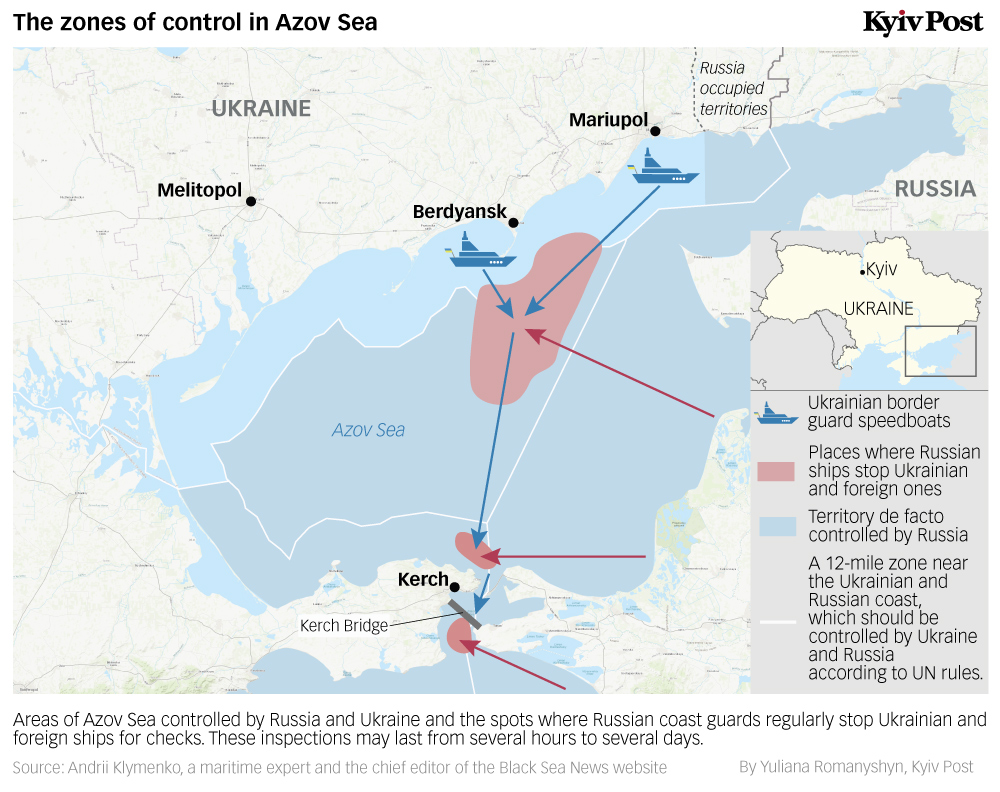
Kyiv Post staff writer Veronika Melkozerova contributed to this story.

